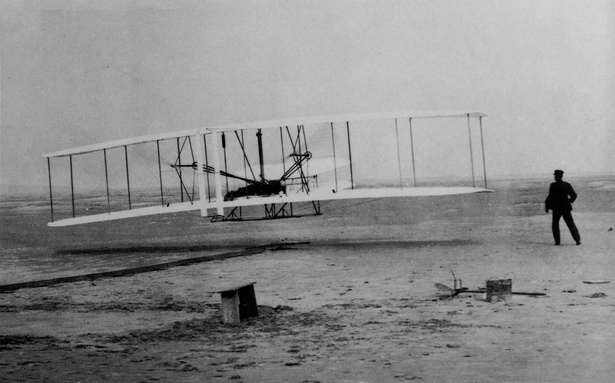From the last century: the top 20 greatest engineering achievements of the 20th century
08.07.10
1. Electrification
Dozens of times a day, each of us without thinking uses reserves of energy sources – coal deposits, oil reservoirs, wind and water energy, atoms and the sun. All this turns into electricity, the workhorse of modern times.
At the beginning of the 20th century, a battle was fought between two systems: the direct current of Thomas Edison and the alternating current of Nikola Tesla and George Westinghouse. As we remember, Edison’s ideas became more popular. Today, electrification has networks no less complex than, for example, the Internet.
The world is connected by flexible networks, new distribution systems that supply electricity over thousands of kilometers. These networks and computer-controlled routing and switching are designed to reduce the number of power outages that previously threatened densely populated areas of different countries, for example, the northeastern United States.
Improvements in this area are being led by the American Electric Power Research Institute (EPRI), created through the efforts of the state and investors to overcome the energy crisis in 1965. EPRI explores ways to increase production capacity and promote the implementation of energy distribution and increasing the reliability of energy efficiency of devices. Reliability has taken on more weight than ever. In the context of the digitalization of the world and the development of telecommunication networks, a power outage even for a short moment of 1/60 of a second can lead to the destruction of a variety of microprocessor devices – from Internet computer servers to life support equipment. EPRI’s goal for the future is to improve the current level of electrical reliability from 99.99% (equivalent to an average of 1 hour of power per year) to a standard known as “nine nines” – 99.9999999% reliability.
2. Car
The already mentioned Thomas Edison made a prophetic prediction in an interview in 1895: “I believe that horseless transportation is a coming miracle. It’s only a matter of time before all cargo and luggage will be transported using motors. True, it is not yet clear what these engines will be like.”
Unsurprisingly, the automotive industry is an industry of constant engineering development, quite a large portion of which is driven by government regulation and social pressure. The desire for maximum safety has led to a rapid evolution from seat belts and airbags to the computerization of braking systems and the development of advanced technologies for night vision and collision avoidance devices. In addition, high technology has penetrated into the fuel system – for example, on-board microprocessors are designed to reduce pollutant emissions and increase fuel efficiency by controlling the fuel-air mixture. And new high-tech materials—improved steel, aluminum, plastics, composites—increase strength while keeping the car’s weight light.
3. Airplane
At the beginning of the twentieth century, the average person could not even imagine what it was like to fly on an airplane. But by the end of the century this had become the norm for millions of people. Moreover, some have already visited space (see hi-Tech PRO 1-2/2010, p. 172 of the electronic version). The first flight on the plane lasted 12 seconds and involved a pilot weighing 55 kg. Now, on commercial flights, the flight duration reaches 15 hours, and the number of passengers reaches several hundred.
Today, computers have become firmly entrenched in the field of mission control. So-called wireless control systems have replaced bulky hydraulic mechanisms and electric motor drives. Compact and lightweight electronic components have revolutionized aviation safety systems. Special collision avoidance systems based on on-board computers, as well as a Doppler radar, warn pilots about all changes – wind strength and direction, and also notify about the operation of all the most important components and compartments at the most critical moments – during takeoff and landing.
4. Water supply system
At the beginning of the twentieth century in the USA and other large countries, water was one of the most sought-after goods. The population grew very quickly, and the water supply systems were in terrible condition and posed a direct threat to the health of citizens.
Today, engineers continue to solve problems to improve water purification, sometimes using simple technologies. A similar one was invented by the Indian scientist Ashok Gakdil after a terrible cholera epidemic in his home country in 1992-1993. The device is a small box with ultraviolet light suspended over a basin of water. Water enters a basin, is irradiated with ultraviolet light, and then is poured, already purified, into another container at a speed of approximately 15 liters per minute. The irradiation lamp consumes no more than a conventional 40 W incandescent lamp. Today, thousands of such devices are used around the world in countries where water requires intensive treatment (Mexico, the Philippines, India, South Africa and many others).
5. Electronics
In 1948, an innovation in electronics was greeted with barely suppressed yawns of boredom. The public did not believe that anything revolutionary could happen. “It’s a device called a transistor. It is used in some radio applications where vacuum tubes were previously used. It was demonstrated yesterday at Bell Laboratories,” this is how the New York Times reacted to the presented invention.
Vacuum tubes were later replaced by transistors in most electronic devices, revolutionizing the creation of integrated circuits and computers. Since the 50s of the 20th century, transistors began to decrease in size and fall in price. Back then, a device the size of an eraser cost a few dollars, but by the mid-70s its size was close to the size of a mosquito, and the price dropped to hundredths of a cent. In the 90s – even less.
Transistors today are functional units of various electronic designs and microcircuits of varying degrees of complexity. Some chips provide electronic memory functionality for storing and retrieving binary data. Others are designed to perform specific tasks with maximum efficiency for controlling audio signals or graphics. Still others are included in the microprocessor class.
6. Radio and television
In the fall of 1899, a revolutionary way of reporting the results of various competitions appeared in the sports news arena. Somewhere beyond the harbor of the Big Apple, two sailboats, the New York Yacht Club’s Columbia and the Shamrock from Ulster, Ireland, were fiercely competing for the America’s Cup. Before this race, fans had no idea what was happening on the water, and only found out the result after the end. This time, however, they heard everything with a “lightning-fast sound signal,” as the radio sports journalists enthusiastically called it.
This was the beginning of a media era that continues to grow today. Internet television, mobile television, podcasts, HDTV, and now 3D television… What will appear in the future is increasingly difficult to predict, but one thing is clear – the twentieth century was a landmark for the inventions of Marconi-Popov and Nipkow.
7. Agricultural mechanization
Driving past large fields near villages, you can sometimes notice various patterns of droplets in the air above them – huge circles and chess squares of different colors. This means that automatic irrigation systems are used on the fields—revolutionary in their time.
Mechanization has affected many processes in agriculture – from milking cows to harvesting crops, feeding animals and more. Therefore, the percentage of the population employed in this area of production constantly decreased in the twentieth century, which led to a global change of civilizations (see hi-Tech PRO 6/2008, p. 86).
8. Computers
The device, proudly featured on the cover of one of the 1975 issues of Popular Electronics magazine, was called “The World’s First Microcomputer to Rival Commercial Models.” The Altair 8800 computer was sold as an assembly for $621, or as a kit of parts for assembly for $439. The developers assumed that they would sell only a few hundred of these cars to enthusiasts, and were surprised when it turned out that they sold several thousand in the first month.
The computer industry made evolutionary leaps faster than any other, moving quite quickly from command-line to graphical interfaces and from stand-alone bulky PCs to laptops and networks. Today’s generation is already involved in the so-called digital era, when absolutely all areas of life are computerized.
In fact, all previously predicted PC capabilities have already been implemented – speech recognition, creation of realistic animation, communication and connection of people from all corners of the globe… But new opportunities are not long in coming, and the average person is unlikely to guess what will happen next, beyond the horizon of digital technology .
9. Phone
“The telephone,” wrote Alexander Graham Bell in the accompanying note to his invention, “may be briefly described as an electrical device for reproducing at a distance the voice of a person with all its intonations.” To connect one such device to another, he proposed utopian means at that time: “It can be assumed that telephone cables can be laid underground or stretched above, connecting private houses, firms, shops, and institutions with separate branches.”
By the way, the basics of cellular telephone communications were developed at Bell Labs back in 1940, but they could not build it because the necessary integrated circuits and other electronic components were simply not produced. Therefore, the matter dragged on until the 1970s. Many companies even then saw great prospects for business in this industry, but government agencies slowed down this process by not allocating the necessary frequencies for a long time.
The first cell phones were installed in cars, had huge sizes by modern standards and prices—more than a thousand dollars. The batteries only lasted a few minutes. Only in the 90s, thanks to microchips, mobile phones began to rapidly decrease in size and become cheaper.
10. Air conditioners and refrigerators
What technology in your home would be the most difficult to live without? Most often the answer to this question is no refrigerator. During the twentieth century, it was also a luxury (after all, mass production began only in 1950), but then it became simply irreplaceable and necessary in any kitchen.
By the way, the refrigerator was first introduced on July 14, 1850 by the American physician John Gorey. He demonstrated the process of producing artificial ice in the apparatus he created.
In his invention, he used compression cycle technology, which is used in modern refrigerators, and the device itself could serve as both a freezer and an air conditioner.
11. Highways
Here are the predictions William Durant, the founder of General Motors, made in an interview in 1992: “Most of us will live to see our country in the future covered with a huge network of highways, smoothly drawn from point to point. Hills will be leveled and bridges will be built—man and technology will do their job.”
Given America’s love of cars, his predictions were not unfounded. And the development of road transport, which began at the end of the 19th century, required the creation of convenient routes for the movement of cars. While their speeds were low, they were limited to horse-drawn roads, using precautions to combat dust and protect the road surface from rapid destruction. With increasing traffic intensity, increasing speeds and loads, more major reconstructions of horse-drawn roads began to be carried out, expanding roadways, eliminating steep ascents and descents, increasing curvature radii, using dust-free and durable road surfaces, etc. After the First World War, most countries began to build only highways that are specifically designed and designed for vehicle traffic. In France they are called autoroute, in England – motorway, in Italy – autostrada, in the USA – highway.
12. Spacecraft
This historical event was so shrouded in darkness that not a single photograph was taken. But none of those present will probably ever forget this moment – when Sputnik was launched on October 4, 1957 on the plains of Kazakhstan. The rocket rose from the take-off field and quickly rushed into the sky, leaving behind only tiny glowing specks…
Today, space missions are becoming farther and more complex, and instead of people, specially designed and controlled robots are sent to them (see hi-Tech PRO 1-2/2010, p. 172 of the electronic version). NASA’s top priority today is to explore neighboring galaxies. And just half a century ago, just reaching the moon was a huge achievement.
13. Internet
After the Soviet Union launched the artificial Earth satellite in 1957, the US Department of Defense believed that America needed a reliable information transmission system in case of war. The US Defense Advanced Research Projects Agency proposed developing a computer network for this purpose.
The construction of such a network was entrusted to the University of California at Los Angeles, the Stanford Research Center, the University of Utah and the University of California at Santa Barbara. The computer network was called ARPANET (Advanced Research Projects Agency Network), and in 1969, as part of the project, the network united four of these scientific institutions. All work was funded by the US Department of Defense. Then the ARPANET network began to actively grow and develop, and scientists from various fields of science began to use it.
And today you can connect to the Internet through many channels: communication satellites, radio channels, cable television, telephone, cellular communications, special fiber-optic lines or electrical wires. The World Wide Web has become an integral part of life in developed and developing countries.
Within five years, the Internet reached an audience of over 50 million users. Other media took much longer to achieve such popularity.
14. Playing an image
To surpass the capabilities of the human eye – this dream did not leave many even after the inventions of Leeuwenhoek and Galileo. In all centuries, people wanted to see better both very distant objects and very close and small ones. But in the 20th century, this was supplemented by the desire to see some phenomena from the category of “magical” – to penetrate into the deep essence of things, to see spectra of color and light invisible to humans.
Today, thanks to advances in technology, man has become closer to the title of the crown of civilization than ever before. It can store and view millions of images captured in photographs taken by micro- and telescopes, using various vision devices, etc. Photography has become a breakthrough that allows us to preserve the world around us in a form convenient for people.
15. Healthcare Technologies
In 1900, the average human life expectancy was 47 years. In 2000 it was 77 years old. The already mentioned water purification technologies also contributed to the increase in this figure. But, to a greater extent, this is due to new diagnostic technologies, pharmaceuticals, medical equipment and improved treatment methods.
Today’s medicine and the medicine of the future are essentially bio- and genetic engineering, nanotechnology and irradiation. Microscopes can even make diagnoses. Research takes place at the level of microorganisms and photonic elements. Robotics is being introduced quite closely into medicine, in particular at the level of new generation prostheses and implants.
16. Household appliances
In 1930, the American magazine Good Housekeeping asked its readers a theoretical question: “How many times would you like to press a button so that dinner would be quickly and deliciously prepared and served, and then the dishes would be washed and laid out?” But then there was no magic button or switch at all – neither for cooking, nor for cleaning, nor for washing – everything fell on the shoulders of women.
Now, almost all the work around the house can be done for us by household appliances, which are also increasingly digitized. And the concept of a smart home, created back in the 1970s, is being fully realized.
17. Oil and petrochemical technologies
Coal was king in the 19th century, oil became the undisputed emperor of the 20th. Refined petroleum was literally the fuel that powered the 20th century—the “lifeblood” of cars, airplanes, farm machinery, and industrial equipment.
Countries with significant oil reserves therefore have a greater chance of becoming prosperous today. But these reserves, like any deposits of natural resources, are exhaustible. And therefore, the synthesis of both oil and other promising energy sources has become a priority task for scientists in this industry.
18. Lasers and fiber optics
If necessity is the mother of invention, then the breakthrough in the field of telecommunications as a pressing need has already experienced its heyday in the middle of the last century.
Most long-distance communications were carried out using copper or coaxial cable. Over the next few decades, they were completely replaced by new technologies.
The principle of light transmission used in fiber optics was first demonstrated in the time of Queen Victoria (1837–1901), but the development of modern fiber technology began in the 1950s. The invention of lasers made it possible to build fiber-optic transmission lines that are superior in their characteristics to traditional wired communications.
19. Nuclear technologies
Beating swords into plowshares is how proponents of nuclear technology have long characterized efforts to develop the peaceful uses of atomic energy. Scientists such as Albert Einstein and Richard Feynman already knew that they were working on a bomb, but they believed (as did Nobel, Holland and Gatling) that they were creating a pre-emptive weapon.
Web-droid editor
Don't miss interesting news
Subscribe to our channels and read announcements of high-tech news, tes
Oppo A6 Pro smartphone review: ambitious

Creating new mid-range smartphones is no easy task. Manufacturers have to balance performance, camera capabilities, displays, and the overall cost impact of each component. How the new Oppo A6 Pro balances these factors is discussed in our review.
Logitech G29 Gaming Wheel review: super car on a table

We’ll tell you about the Logitech G29 gaming wheel for PC and PlayStation, as well as the 6-speed Driving Force Shifter add-on.
The Cabinet of Ministers has canceled paper military tickets. Now only Reserve+ events in Ukraine
Government of Ukraine has decided to transfer the entire military accounting system to digital format
New AI OpenAI GPT-5.2 outperforms human experts in 70% of tasks: is the end of humanity near? artificial intelligence
OpenAI announced the launch of the GPT-5.2 line, marking it as the most notable update towards universal AI






